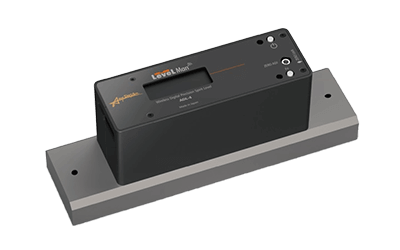What Is a Precision Level?

Precision level is used to check the level in the manufacturing process of precision instruments that require a high-level standard. The accuracy of precision levels is strictly defined by the JIS standard. Precision levels that measure the position of bubbles with a sensor to obtain the degree of inclination as a digital signal are also available.
Uses of Precision Levels
Precision levels are used at manufacturing sites where high precision is required, such as in producing precision instruments, semiconductors, and displays. They are used before operating or installing machine tools and manufacturing equipment. They may also be mounted on equipment that requires a high degree of leveling for each operation. When selecting a precision level, it is necessary to consider measurement accuracy, resistance to vibration, whether it is a digital or analog type, suitability for the environment in which it will be used, ease of measurement, size, and other factors.
Principles of Precision Levels
This section describes the measurement principle of a precision level. Precision levels consist of a container, which is precisely calibrated and guaranteed to be level, and a precision enclosure to which the container is attached. The container is slightly curved and contains a defined amount of liquid and gas. In the case of the digital type, an image sensor is built into the area where the bubbles are observed.
When measuring visually, the inclination of the area where the precision level is located is measured by visually checking where the bubbles are located on the scale on the container. In the case of the digital type, by processing the image acquired from the sensor, the degree of inclination is calculated by the built-in control board and shown on the display. It can also function as a sensor to maintain the level by transmitting the degree of inclination as an electrical signal to other connectable devices, performing feedback control, etc. Due to its mechanism, it may not function correctly in environments with a lot of vibration or high temperatures.
Types of Precision Levels
The structure and accuracy of precision levels are determined by the Japanese Industrial Standards (JIS).
Precision levels are classified into three types according to their sensitivity. JIS defines the sensitivity of a level as one type (0.02 mm/m, approx. 4 seconds), two types (0.05 mm/m, approx. 10 seconds), and three types (0.1 mm/m, approx. 20 seconds). Sensitivity refers to the inclination angle required to move a bubble one scale interval, and the sensitivity indication is based on the height relative to 1 meter of the base.
For example, in the case of Type 1, a height of 0.02mm per meter of the base is detected on a single scale, and if a bubble moves one scale using a 300mm size level (Type 1: sensitivity 0.02mm/m), there is a difference in height of 6μm from one end of the level to the other.
Sensitivity is also expressed in terms of tilt angle (seconds). An angle of 1 second is 4.85 µm per meter.
Class 1 0.02mm/m = Angle 4 seconds = 0.00111°.
Class 2 0.05mm/m = Angle 10 seconds = 0.00277°.
Class 3 0.1mm/m = Angular degree 20 seconds = 0.0055°.
Precision Level Grades
JIS classifies precision levels into Class A and B according to their performance (accuracy). The intersection of each performance is as follows. Accuracy is the overall goodness, including accuracy and precision (small degree of variation) of the value or measurement result expressed by the measuring instrument, and is the measurement variation. When a measurement is made, it takes the form of a measured value ± precision, with the actual value of the measurement objective included in the ± accuracy.
According to JIS, the accuracy is as follows.
- Full range accuracy (Class 1): Class A ±0.5 graduation, Class B ±0.7 graduation
- Accuracy over the entire range (Class 2 and Class 3): Class A ±0.3 graduation, Class B ±0.5 graduation
- Adjacent accuracy (Class 1, 2, and 3): Class A, 0.2 graduation. Class B, 0.5 graduation